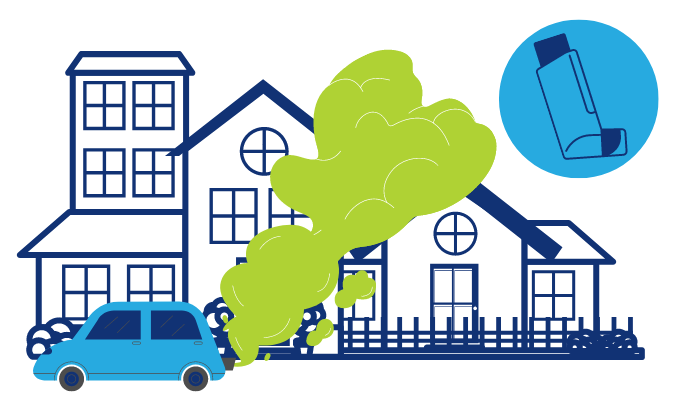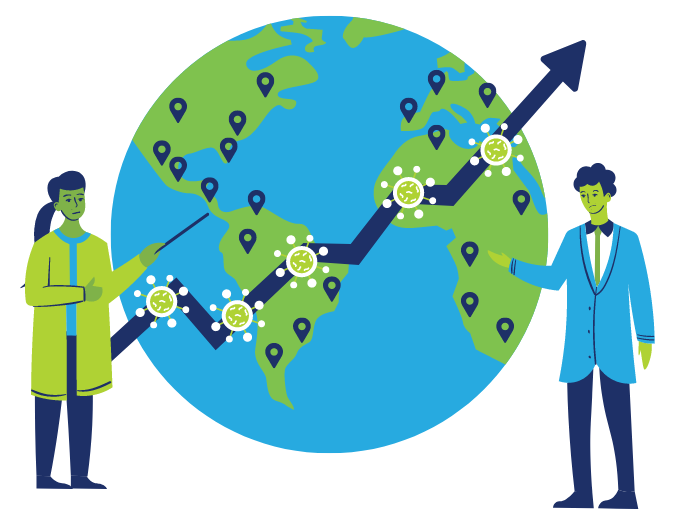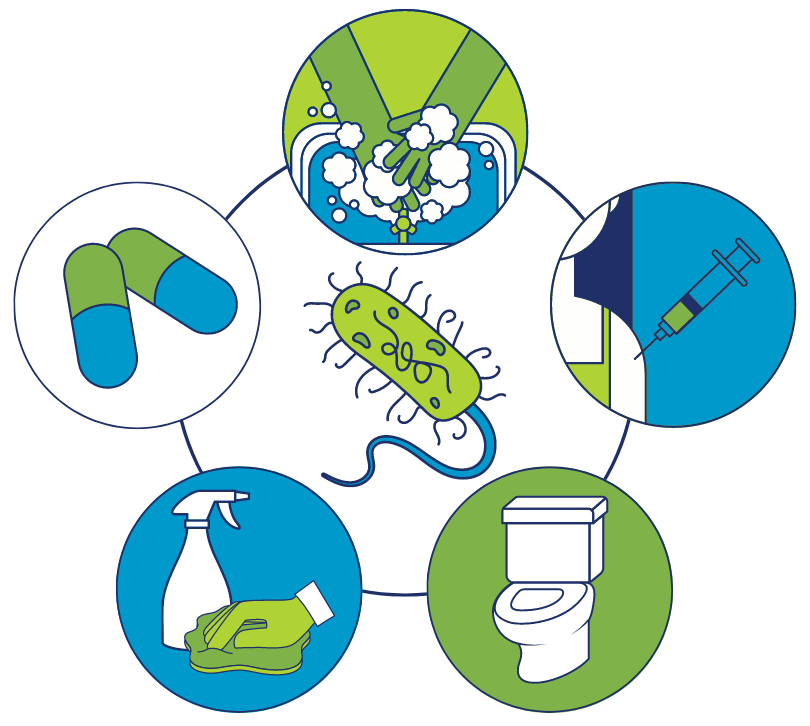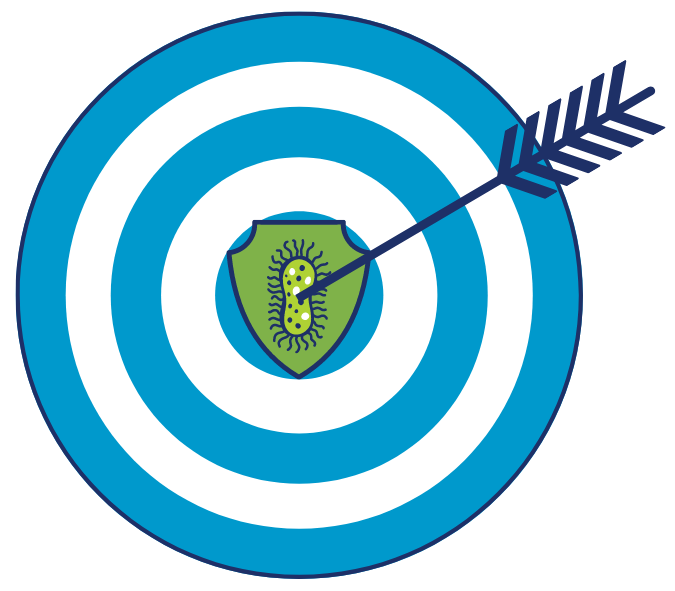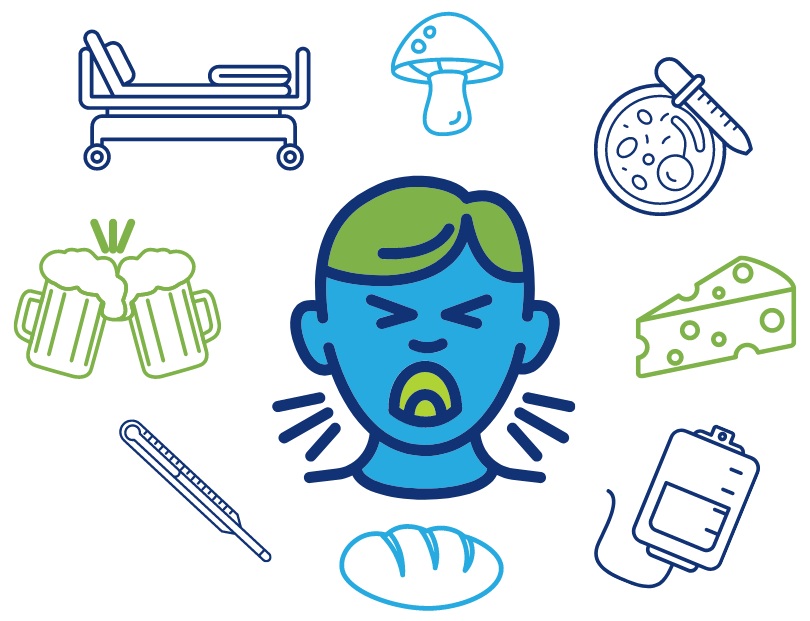
Fungi can be our friends. They’re responsible, after all, for some of our favorite foods and drinks, including beer, bread, wine, and cheese. Penicillin, the parent of all antibiotics, comes from the fungal family as well.
But fungi can also cause disease in humans, animals, and plants. In this episode of One World, One Health, Dr. Ana Alastruey-Izquierdo, a research scientist at the Mycology Reference Laboratory of Spain and head of the mold unit, explains how fungal diseases affect people, how they evolve to evade treatment, and what people are doing that helps make these fungal infections even more dangerous.
Climate change and the imprudent use of antifungal treatments on crops are both working to toughen up fungal pathogens, she says. The World Health Organization even released a list of the world’s most preoccupying fungal pathogens in 2022.
Listen as Dr. Alastruey-Izquierdo tells us why we need more awareness of fungal infections and what we can do to fight them.
Maggie Fox 00:00
Hello and Welcome to One World, One Health with the latest ideas to improve the health of our planet and its people. I’m Maggie Fox. All of us here on planet Earth are facing problems such as pollution, climate change, and infectious diseases (old and new). All of these problems are connected. This podcast is brought to you by the One Health Trust with bite-sized insights into ways to help.
When people think about infectious diseases, we usually think about viruses and bacteria, maybe parasites like the ones that cause malaria. But there’s another cause of infectious diseases — fungi (we’re not talking about mushrooms or truffles). Fungal diseases, such as Aspergillus mucormycosis or black fungus disease, and a new pathogen called Candida Oris directly kill 1.3 million people a year and contribute to the deaths of 5 million more people according to the World Health Organization.
In this episode, we’re chatting with someone who’s trying to do something about it. Ana Alastruey Izquierdo works at the Mycology Reference Laboratory at the Instituto de Salud Carlos III in Madrid, Spain. She’s also a member of the Global Action for Fungal Infections (or GAFFI for short). She’s tried to make people aware of how we’re making an already bad problem worse with some of the ways we spray crops and with climate change. Anna, thank you so much for joining us.
Ana Alastruey-Izquierdo 01:29
Thank you, Maggie. I’m very happy to be here.
Maggie Fox 01:31
Can we run through some of the fungi that infect people and how do they get them?
Ana Alastruey-Izquierdo 01:36
Yeah, that’s a very important question. There are 1.5 million species of fungi, but only a few of them can cause disease. They play a crucial role in breaking down organic material; they are important for food production; and they produce cheese and beer. So, everybody knows fungi (as we cannot live without fungi and the beer, bread, and cheese they produce). Nobody, right!
But the ones that are really pathogenic are the ones that I like (to keep an) eye on because that’s where I do most of my research. There are only a few hundred, but they cause disease in humans, animals, and plants. The ones that are in humans are Candida Albicans and Aspergillus Fumigatus (most prevalent ones). But there are some others, such as Candida Auris, that have been causing major problems, such as the outbreaks in hospitals, that are very difficult to control over the last few years.
And also, there are some mucormycosis that were important during COVID. They caused a big problem in India. And the range of diseases that they can cause is also very variable. They can cause superficial infections, such as onychomycosis (an infection in the nails which is very common and usually caused by fungi). They also cause vaginal candidiasis (which is also a prevalent condition among women) and severe diseases with high mortality rates.
Maggie Fox 03:13
And one of the most new and severe diseases is Candida Auris, which is spreading quickly, of late, in Europe. It’s even closing hospitals in countries, such as Brazil. Can you talk a little bit more about Candida Auris.
Ana Alastruey-Izquierdo 03:26
I think it has been like a star — the star in the fungal world in the last year. It was just recently discovered in 2009. And we only knew it because it was isolated from an ear infection. But then suddenly, in 2015, or 2016, several outbreaks started to occur in different countries.
So, it was suddenly a nosocomial pathogen — a pathogen that was causing infections in the hospitals. It’s now becoming a big problem, as you said. There are outbreaks in hospitals in Italy, Greece, Spain, the US, Brazil, and South Africa. So, it’s a very interesting pathogen, especially because it’s very resistant to the treatment.
Maggie Fox 04:13
You mentioned that it started out as an ear infection. How can an ear infection make people so sick that they might die?
Ana Alastruey-Izquierdo 04:20
That’s something that we are still not very sure about (how that happened). But there is a theory that it could be because of global warming and all these environmental changes because as I said, there are 1.5 millions of fungal species, but only a few of them can cause disease. So, the process is that this species was around in the environment without really being a real pathogen, and then it caused an ear infection, which kind of is still superficial.
The reason these fungi cannot cause disease is that they are not able to grow at 37 degrees or lower body temperature. I think that with global warming, the fungi are adapting to grow in higher temperatures. And that’s how this pathogen became human pathogen. But this is only theory (and it has never been true). However, what did happen was that it spread all over the world and started causing diseases in different parts of the world at the same time.
Maggie Fox 05:23
Who’s vulnerable to these fungal infections? Do they infect healthy people or only those who have some kind of immune suppression?
Ana Alastruey-Izquierdo 05:31
Yeah, that’s also a very interesting question. So, fungi are ubiquitous. They are all around you and everybody breathes these spores every day. And usually, the inhalation of spores is the main root of infection. However, most of us do not get sick. There is a group of fungi called endemic mycoses that are also able to cause disease in immuno-competent population — normal people with regular immune system.
They are restricted usually to certain rare geographical regions and are related more with specific environmental exposure like valley fever coccidioidomycosis, which is in the US, but, usually, most of the fungi are opportunistic infections. The people who are at risk of them are the immunocompromised people.
So, people with HIV and patients who are taking immune suppressors (such as transplant patients), and old people who have undergone chemotherapies and biological treatments. So, whenever your immune system is not in perfect shape, the fungi can attack and cause a disease. And of course, you can treat these fungi with drugs, but some of them are developing, what’s known as, resistance to the antifungal drugs.
Maggie Fox 06:51
Some are also already naturally resistant to antifungal drugs that we use. How does that happen?
Ana Alastruey-Izquierdo 06:58
You see, everything is interesting in the fungal world. So, one of the biggest problems, when compared with bacteria, is that we have a very limited number of treatments or antifungals. So, when we say this is a multi-resistant fungus, we are talking about mainly three classes. It’s not that we really need to invest more in having more treatments. But going back to your question and how this has really happened is that there are fungi that are intrinsically resistant.
There are some species that are resistant to all the treatments that we have now, such as Lomentospora prolificans, which is a rare disease, but whenever you get it, it is very difficult to treat, and mortality is very high. But there are some others. This is where we are more worried now because they’re developing resistance and the numbers are rising worldwide now. They are developing resistance because of the pressure (it can be on one side from the clinical treatment).
So, these are sometimes patients that had very low treatments because they either have a chronic infection or they are prophylactically treated (because of the weak immune system). And this is very prolonged because the treatments are usually long-term. So, they can develop resistance because of long-term treatments in the clinic and because of the use of fungicides in agriculture (as fungi are mainly pathogenic to plants).
Maggie Fox 08:25
So, let’s talk a bit more about the way crops and plant treatments affect these fungi. Can you talk about how they help them develop resistance to drugs that are used in people?
Ana Alastruey-Izquierdo 08:36
As I said, fungi are one of the major groups of pathogens that can affect plants. So, these antifungals are used to protect the crops and the flowers. We really need to treat them to be able to protect them and not get infected. So, the problem occurs when these antifungals (that are used in clinics) are also used in fungicides in agriculture. It has been demonstrated that the chemical class (of these antifungals), is more or less the same despite not being the same specific agent.
Moreover, the use of the same class in the environment and for treating the plants is putting pressure on this species and (as a result) they are developing resistance. So, as we were saying, fungi are all over the world and they are really living. They’re ubiquitous. So, they are in the plants, the sea, and everywhere. But whenever you treat the field with fungicides, you are putting pressure on them and thus, they are developing secondary resistance (or resistance to the treatments that we use in clinics).
Maggie Fox 09:41
Why do we even do that? Why do we use the same chemical treatments on plants and crops as we use to treat people? How did that even happen?
Ana Alastruey-Izquierdo 09:48
This is a very good question. It seems stupid, right! It’s like why you would ever do that. While there are differences between plants and pathogenic fungi and humans. They share fundamental characteristics, the antifungal cells are effective for both groups. And it’s very difficult to develop new antifungals because fungi are vastly different than bacteria and viruses and are closer to us.
So, they are eukaryotic. They have a eukaryotic cell. And it’s more difficult to develop to find targets that you can fight that are not toxic to us. Thus, there is a very limited number. That’s why they have been used in fungicides.
Maggie Fox 10:35
It sounds to me like the people who develop these antifungal crop treatments weren’t talking to scientists and physicians who treat fungal diseases in people.
Ana Alastruey-Izquierdo 10:50
Yeah, I think that we are making a difference now. So, it’s true that one cannot ask agricultural people to not use fungicides because they also need something to treat the plants. But what we are now trying to open the discussion with them. We are, at least, trying to protect the new entities because we’ve seen this with azoles which are a group of antifungals that have been in use for more than 20 years in both clinics and for the environment.
But now there are new classes. Luckily, in the last year or so, there has been a development of new antifungals. And there are two new classes of antifungals that have been in clinical trials, and they are costing millions of dollars and also years of research that are still not licensed for use in the human environment. But the regulations for using fungicides in agriculture are not that big.
Also, it takes a very short time to develop a fungicide. So, the same chemical agents that are already used in the environment have been licensed for use in fungicides. The aim of this group of people, that has been trying to put together all these stakeholders, is to protect the new agents and I think now, as you said, it seems stupid, but we are in different worlds. And sometimes you really need to talk to each other and it’s sometimes not that easy.
Maggie Fox 12:18
The World Health Organization recently released a list of the priority fungal pathogens. Can you talk about how that’s useful?
Ana Alastruey-Izquierdo 12:25
I am very happy that in the last October, the WHO released the first ever fungal priority pathogen list, in which we have prioritized the most important species (while taking into account this antifungal resistance problem, mortality, severity, and several other complications). We have detected several areas for action, meaning public health surveillance, research and development.
And I think it’s important to convey and amplify the message that we need to develop new antifungals because they are very limited. But we also need to create better diagnostics because we still don’t have a very good diagnostic for a fungal infection. Sometimes, or on many occasions, fungal infections are diagnosed late or even in autopsies (during post-mortem). Also, a fungal infection is usually suspected after a couple of rounds of antibiotics that are not responding.
So, they don’t know what to do and then suddenly somebody comes up and says that maybe this is a fungal infection. So, we really need to improve the capacity; uncover and improve the knowledge; raise more awareness; and educate healthcare workers at all levels. I think this is very important because these infections don’t have specific (things and) symptoms (and are thus, always suspected).
So, the list that the WHO has released has had an impact and many people are now paying attention to fungal infections. This is creating awareness (which is one of our main priorities with initiatives like this podcast). It’s a very fundamental task.
Maggie Fox 14:07
Anna, thank you so much for joining us.
Ana Alastruey-Izquierdo 14:10
Thank you.
Maggie Fox 14:11
If you liked this podcast, which is brought to you by the One Health Trust, please share it by email or on social media. And let us know what else you’d like to hear about at [email protected]. Thanks for listening.
Maggie Fox 00:00
Hola y bienvenidos a One World, One Health, con las últimas ideas para mejorar la salud de nuestro planeta y su gente. Soy Maggie Fox. Todos nosotros aquí en el planeta Tierra enfrentamos problemas como la contaminación, el cambio climático y las enfermedades infecciosas (antiguas y nuevas). Todos estos problemas están conectados. Este podcast es presentado por One Health Trust con información breve sobre formas de ayudar.
Cuando la gente piensa en enfermedades infecciosas, normalmente pensamos en virus y bacterias, tal vez parásitos como los que causan la malaria. Pero hay otra causa de enfermedades infecciosas: los hongos (no hablamos de setas ni de trufas). Las enfermedades fúngicas, como la mucormicosis por Aspergillus o la enfermedad del hongo negro, y un nuevo patógeno llamado Candida Oris matan directamente a 1,3 millones de personas al año y contribuyen a la muerte de 5 millones más, según la Organización Mundial de la Salud.
En este episodio, estamos charlando con alguien que está intentando hacer algo al respecto. Ana Alastruey Izquierdo trabaja en Mycology Reference Laboratory del Instituto de Salud Carlos III en Madrid, España. También es miembro de Global Action for Fungal Infections (o GAFFI para abreviar). Ha tratado de concientizar a la gente sobre cómo estamos empeorando un problema que ya era grave con algunas de las formas en que fumigamos los cultivos y con el cambio climático. Ana, muchas gracias por acompañarnos.
Ana Alastruey-Izquierdo 01:29
Gracias Maggie. Muy feliz de estar aquí.
Maggie Fox 01:31
¿Podemos analizar algunos de los hongos que infectan a las personas y cómo se obtienen?
Ana Alastruey-Izquierdo 01:36
Sí, esa es una pregunta muy importante. Hay 1,5 millones de especies de hongos, pero sólo unas pocas pueden causar enfermedades. Desempeñan un papel crucial en la descomposición del material orgánico; son importantes para la producción de alimentos; y producen queso y cerveza. Todo el mundo conoce los hongos (ya que no podemos vivir sin los hongos y la cerveza, el pan y el queso que producen). ¡Nadie, verdad!
Pero los que son realmente patógenos son aquellos a los que me gusta (vigilar) porque es donde hago la mayor parte de mi investigación. Sólo hay unos pocos cientos, pero causan enfermedades en humanos, animales y plantas. Las que se encuentran en humanos son Candida Albicans y Aspergillus Fumigatus (las más frecuentes). Pero hay otras, como la Candida Auris, que están provocando problemas importantes, como los brotes en hospitales, muy difíciles de controlar en los últimos años.
Y además, hay algunas mucormicosis que fueron importantes durante el COVID. Causaron un gran problema en la India. Y la variedad de enfermedades que pueden provocar también es muy variable. Pueden provocar infecciones superficiales, como la onicomicosis (una infección en las uñas muy común y normalmente causada por hongos). También causan candidiasis vaginal (que también es una enfermedad prevalente entre las mujeres) y enfermedades graves con altas tasas de mortalidad.
Maggie Fox 03:13
Y una de las enfermedades más nuevas y graves es la Candida Auris, que últimamente se está propagando rápidamente en Europa. Incluso está cerrando hospitales en países como Brasil. ¿Puedes hablar un poco más sobre Candida Auris?
Ana Alastruey-Izquierdo 03:26
Creo que ha sido como una estrella, la estrella en el mundo de los hongos durante el último año. Fue descubierto recientemente en 2009. Y sólo lo supimos porque se aisló de una infección de oído. Pero de repente, en 2015 o 2016, comenzaron a producirse varios brotes en diferentes países.
Entonces, de repente se convirtió en un patógeno nosocomial, un patógeno que causaba infecciones en los hospitales. Ahora se está convirtiendo en un gran problema, como usted dijo. Hay brotes en hospitales de Italia, Grecia, España, Estados Unidos, Brasil y Sudáfrica. Es un patógeno muy interesante, especialmente porque es muy resistente al tratamiento.
Maggie Fox 04:13
Mencionaste que comenzó como una infección de oído. ¿Cómo puede una infección de oído enfermar tanto a las personas que podrían morir?
Ana Alastruey-Izquierdo 04:20
Eso es algo de lo que todavía no estamos muy seguros (cómo sucedió), pero existe la teoría de que podría deberse al calentamiento global y a todos estos cambios ambientales porque, como dije, hay 1,5 millones de especies de hongos, pero solo unas pocas de ellas pueden causar enfermedades. El proceso es que esta especie estaba en el medio ambiente sin ser realmente un patógeno real, y luego causó una infección de oído, que todavía es superficial.
La razón por la que estos hongos no pueden causar enfermedades es que no pueden crecer a 37 grados o menos de temperatura corporal. Creo que con el calentamiento global los hongos se están adaptando para crecer en temperaturas más altas. Y así fue como este patógeno se convirtió en patógeno humano. Pero esto es sólo teoría (y nunca ha sido verdad). Sin embargo, lo que sí sucedió fue que se extendió por todo el mundo y empezó a causar enfermedades en diferentes partes del mundo al mismo tiempo.
Maggie Fox 05:23
¿Quién es vulnerable a estas infecciones por hongos? ¿Infectan a personas sanas o sólo a aquellas que tienen algún tipo de inmunosupresión?
Ana Alastruey-Izquierdo 05:31
Sí, esa también es una pregunta muy interesante. Los hongos están en todas partes, están a tu alrededor y todo el mundo respira estas esporas todos los días. Y, por lo general, la inhalación de esporas es la principal raíz de la infección. Sin embargo, la mayoría de nosotros no nos enfermamos. Hay un grupo de hongos llamados micosis endémicas que también pueden causar enfermedades en poblaciones inmunocompetentes: personas normales con un sistema inmunológico normal.
Generalmente están restringidos a ciertas regiones geográficas raras y están más relacionados con exposiciones ambientales específicas como la coccidioidomicosis de la fiebre del valle, que ocurre en los EE. UU., pero, por lo general, la mayoría de los hongos son infecciones oportunistas. Las personas que corren riesgo de sufrirlos son las personas inmunocomprometidas.
Las personas con VIH y los pacientes que están tomando inmunosupresores (como los pacientes trasplantados) y los ancianos que se han sometido a quimioterapias y tratamientos biológicos. Entonces, siempre que tu sistema inmunológico no esté en perfectas condiciones, los hongos pueden atacar y causar una enfermedad. Y, por supuesto, se pueden tratar estos hongos con medicamentos, pero algunos de ellos están desarrollando lo que se conoce como resistencia a los medicamentos antimicóticos.
Maggie Fox 06:51
Algunos también son resistentes a los medicamentos antimicóticos que utilizamos. ¿Cómo sucede eso?
Ana Alastruey-Izquierdo 06:58
Verás, todo es interesante en el mundo de los hongos. Uno de los mayores problemas, en comparación con las bacterias, es que tenemos un número muy limitado de tratamientos o antifúngicos. Entonces, cuando decimos que se trata de un hongo multirresistente, hablamos principalmente de tres clases. No es que realmente necesitemos invertir más para tener más tratamientos. Pero volviendo a tu pregunta y a cómo ha sucedido esto realmente es que hay hongos que son intrínsecamente resistentes.
Hay algunas especies que son resistentes a todos los tratamientos que tenemos ahora, como la Lomentospora prolificans, que es una enfermedad rara, pero cuando se contrae es muy difícil de tratar y la mortalidad es muy alta, pero hay algunos otros, aquí es donde estamos más preocupados ahora porque están desarrollando resistencia y las cifras están aumentando en todo el mundo. Están desarrollando resistencia debido a la presión (puede estar en un lado del tratamiento clínico).
Entonces, a veces se trata de pacientes que recibieron tratamientos reducidos porque tienen una infección crónica o reciben tratamiento profiláctico (debido al sistema inmunológico débil). Y esto es muy prolongado porque los tratamientos suelen ser de larga duración. Por lo tanto, pueden desarrollar resistencia debido a tratamientos a largo plazo en la clínica y al uso de fungicidas en la agricultura (ya que los hongos son principalmente patógenos para las plantas).
Maggie Fox 08:25
Bien, hablemos un poco más sobre la forma en que los cultivos y los tratamientos de las plantas afectan a estos hongos. ¿Puedes hablarnos de cómo les ayudan a desarrollar resistencia a los medicamentos que se utilizan en las personas?
Ana Alastruey-Izquierdo 08:36
Como decía, los hongos son uno de los grandes grupos de patógenos que pueden afectar a las plantas. Estos antifúngicos se utilizan para proteger los cultivos y las flores, realmente necesitamos tratarlos para poder protegerlos y no infectarse. El problema surge cuando estos antifúngicos (que se usan en las clínicas) también se usan como fungicidas en la agricultura. Se ha demostrado que la clase química (de estos antifúngicos), es más o menos la misma a pesar de no ser el mismo agente específico.
Además, el uso de la misma clase en el medio ambiente y para el tratamiento de las plantas está ejerciendo presión sobre esta especie y (como resultado) están desarrollando resistencia. Como decíamos, los hongos están en todo el mundo y realmente están vivos, son omnipresentes. Están en las plantas, en el mar y en todas partes. Pero siempre que tratas el campo con fungicidas, estás presionando y por lo tanto están desarrollando resistencia secundaria (o resistencia a los tratamientos que usamos en las clínicas).
Maggie Fox 09:41
¿Por qué hacemos eso? ¿Por qué utilizamos los mismos tratamientos químicos en plantas y cultivos que utilizamos para tratar a las personas? ¿Cómo sucedió eso?
Ana Alastruey-Izquierdo 09:48
Esta es una muy buena pregunta, parece una estupidez, es como ¿porqué harías eso?, ¿no? Si bien existen diferencias entre plantas, hongos patógenos y humanos, comparten características fundamentales, las células antifúngicas son efectivas para ambos grupos, y es muy difícil desarrollar nuevos antifúngicos porque los hongos son muy diferentes a las bacterias y los virus y están más cerca de nosotros.
Entonces son eucariotas, tienen una célula eucariota. Y es más difícil desarrollarse para encontrar objetivos contra los que poder luchar y que no sean tóxicos para nosotros. Por tanto, hay un número muy limitado. Por eso se han utilizado en fungicidas.
Maggie Fox 10:35
Me parece que las personas que desarrollan estos tratamientos antifúngicos para cultivos no estaban hablando con científicos y médicos que tratan enfermedades fúngicas en personas.
Ana Alastruey-Izquierdo 10:50
Sí, creo que ahora estamos marcando la diferencia, es cierto que no se puede pedir a los agricultores que no utilicen fungicidas porque también necesitan algo para tratar las plantas. Pero lo que ahora estamos intentando es abrir el debate con ellos. Al menos estamos tratando de proteger a los nuevos organismos, porque lo hemos visto con los azoles, que son un grupo de antifúngicos que se han utilizado durante más de 20 años tanto en clínicas como para el medio ambiente.
Pero ahora hay clases nuevas. Afortunadamente, en el último año se han desarrollado nuevos antimicóticos, y hay dos nuevas clases de antifúngicos que han estado en ensayos clínicos y están costando millones de dólares y también años de investigación que aún no tienen licencia para su uso en el entorno humano. Pero las regulaciones para el uso de fungicidas en la agricultura no son tan estrictas.
Además, se necesita muy poco tiempo para desarrollar un fungicida, los mismos agentes químicos que ya se utilizan en el medio ambiente han sido autorizados para su uso en fungicidas. El objetivo de este grupo de personas, que ha estado tratando de reunir a todos estos interesados, es proteger a los nuevos agentes y creo que ahora, como usted dijo, parece tonto, pero estamos en mundos diferentes. A veces realmente necesitas hablar con los demas y a veces no es tan fácil.
Maggie Fox 12:18
The World Health Organizacion publicó recientemente una lista de hongos patógenos prioritarios. ¿Puedes explicar porque es util?
Ana Alastruey-Izquierdo 12:25
Estoy muy feliz de que en octubre pasado la WHO publicara la primera lista de patógenos prioritarios para los hongos, en la que hemos priorizado las especies más importantes (teniendo en cuenta este problema de resistencia a los antifúngicos, la mortalidad, la gravedad y varias otras complicaciones). Hemos detectado varias áreas de actuación, es decir, vigilancia de la salud pública, investigación y desarrollo.
Y creo que es importante transmitir y amplificar el mensaje de que necesitamos desarrollar nuevos antimicóticos porque son muy limitados. Pero también tenemos que crear mejores diagnósticos porque todavía no tenemos un diagnóstico muy bueno para una infección por hongos.
A veces, o en muchas ocasiones, las infecciones por hongos se diagnostican tardíamente o incluso en las autopsias (durante la autopsia). Además, generalmente se sospecha una infección por hongos después de un par de rondas de antibióticos que no responden.
Entonces, no saben qué hacer y de repente alguien viene y dice que tal vez se trata de una infección por hongos. Realmente necesitamos mejorar la capacidad; descubrir y mejorar el conocimiento; crear más conciencia; y educar a los trabajadores de la salud en todos los niveles. Creo que esto es muy importante porque estas infecciones no tienen (cosas ni) síntomas específicos (y, por lo tanto, siempre se sospecha).
La lista que ha publicado the WHO ha tenido un impacto y muchas personas ahora están prestando atención a las infecciones por hongos. Se trata de crear conciencia (que es una de nuestras principales prioridades con iniciativas como este podcast). Es una tarea fundamental.
Maggie Fox 14:07
Ana, muchas gracias por acompañarnos.
Ana Alastruey-Izquierdo 14:10
Gracias.
Maggie Fox 14:11
Si le gustó este podcast, presentado por One Health Trust, compártalo por correo electrónico o en las redes sociales. Y háganos saber qué más le gustaría saber en [email protected] . Gracias por su atención.
Guest

Dr. Ana Alastruey-Izquierdo is a research scientist at the Mycology Reference Laboratory of Spain where she leads the mold unit. She chairs the technical expert group of the Fungal priority Pathogens list from the WHO, is the chair of the Fungal Infection Study group for the European Society of Clinical Microbiology and Infectious Diseases (ESCMID), president of the Spanish Society for Mycology (AEM), a fellow and board member of the European Confederation of Medical Mycology (ECMM), and a member of the Scientific Advisory Board of the Joint Program Initiative on Antimicrobial Resistance (JPIAMR). Her main area of interest is identification and early diagnosis of invasive fungal infections, antifungal susceptibility testing and surveillance, and characterization on antifungal resistance. She has published more than 150 peer reviewed articles in scientific journals including several guidelines for diagnosis and treatment of fungal infections.
Credits
Hosted and written by Maggie Fox
Special guest: Ana Alastruey-Izquierdo
Produced and edited by Samantha Serrano
Music composed and sound edited by Raquel Krügel
Transcript edited by Dipyaman Sengupta

